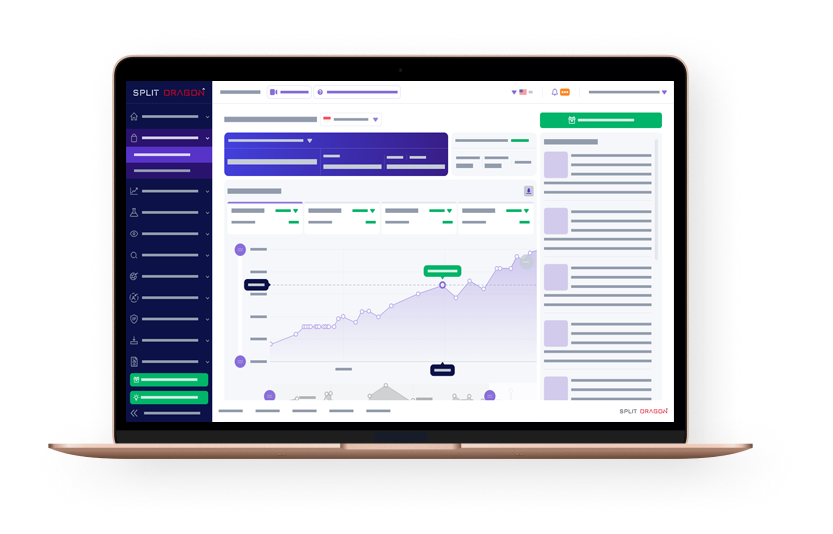Below is an easy-to-understand guide on how to follow a pricing strategy for your Lazada and Shopee products based on different market triggers.
What Is A Pricing Strategy?
Essentially, a pricing strategy pertains to the set of methods or rules that your business can use to set appropriate prices for your Lazada/Shopee products.
Even though pricing and marketing are different arenas, they are closely tied together because nailing the right pricing for your products is the key to increase your conversion rate.
As an online seller, if you fail to set your prices right, either one of two things can happen:
- Your prices are too high that potential customers would not want to buy your product
- Your prices are too long that even though you have a high conversion rate, you will barely benefit from the sale because the amount you have is just enough to compensate for your marketing expenses as well as the capital that you invested in the purchase of your products
When it comes to eCommerce, there are typically multiple pricing strategies that you can incorporate into your business. However, as a Lazada/Shopee seller, the most applicable and ROI-inducive pricing strategy is the competition-based pricing strategy.
What Are The Components Of A Sound Pricing Plan?
When you formulate a price for your products, it should result in the following outcome:
- Optimizes your product for visibility, click-thru, and conversion rate
- Gives you optimized profit
- Helps meet the specific objectives of your product listing at its unique phase (launch vs steady state)
- Gets you more sales and profit
- You will be able to beat your competition
That being said, your pricing plan should consist of the following components:
- Cost of goods sold (COGS)- this pertains to your expenses in purchasing your products or in the materials that you invested in for production
- Landed cost – pertains to cost of goods sold (COGS) + all shipping and taxes to get the product to the warehouse
- Operational expenses – the compensation you pay your warehouse or customer care personnel (your staffs)
- Warehousing cost – refers to your costing in renting out or obtaining the storage facility of your products
- Packaging cost – your expenses for securing your products in protective material prior to shipping the items
- Advertising cost – pertains to your estimated per product cost with regards to paid ads and other campaigns
- Profit margin – when you deduct all the costs from your price, the profit margin is the profit that you get from each sale or revenue. To arrive at your profit margin, you may follow this formula: Your profit margin = sales price – COGS + all other above expenses.
How Often Should You Change Your Prices?
With regards to price changes, look out for these triggers/events:
Product Launch
During a product launch, you need to gradually build up your presence in the product search algorithms.
With that, a 30% to 50% discount on the price point will enable you to accumulate sufficient reviews to increase your credibility towards potential buyers.
If you are unsure about the initial price point, AB testing is a good strategy to use to determine which one will be most profitable for you.
Split Dragon has an AB testing feature that lets you automate the process. To learn more about this feature, you can read our post on AB Testing for Lazada and Shopee Sellers – Why And How To Do It.
As you establish your credibility, you can gradually pick back up on your product’s original pricing.
Below are some signals that mean it is a good time for you to increase your price:
- Your search rank is at least on the first page
- You have at least 100 positive reviews
During A Campaign
For regular campaigns, you can play around with the lowest and middle point discounts you can provide such as 5% or 15% discounts.
Meanwhile, on huge event campaigns such as the 11.11 or 12.12 sale, that is the time you should offer the lowest price you can offer without having to suffer a negative ROI. You can refer to your pricing margin to know the lowest price that you can reasonably offer.
Competitor Price Changes
To start off competitively in Shopee/Lazada, you need to set prices that are within the pricing benchmark of your main competitors. And then you have to constantly monitor their pricing so that you can react to their price changes.
To know your competitors, our recommendation is for you to conduct actual market research using Split Dragon (Only for Shopee sellers).
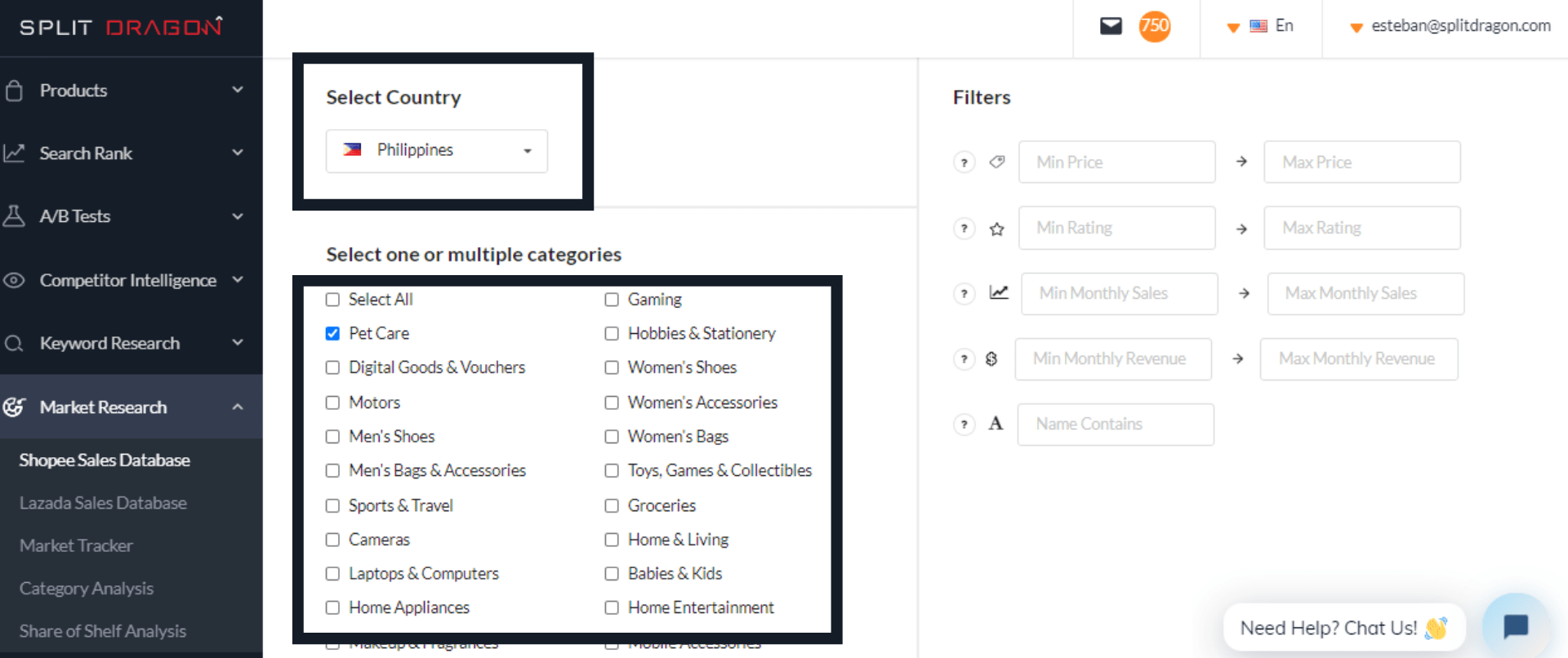
Instructions
Go to your Split Dragon account and then click Market Research. Under that, select Shopee Sales Database.
Make sure to set it to your home country from where you are selling from and then select the product category that applies to your business.
In our example, the market is for the Philippines and the product category is Pet Care.
When you’ve set these two filters, click Search.
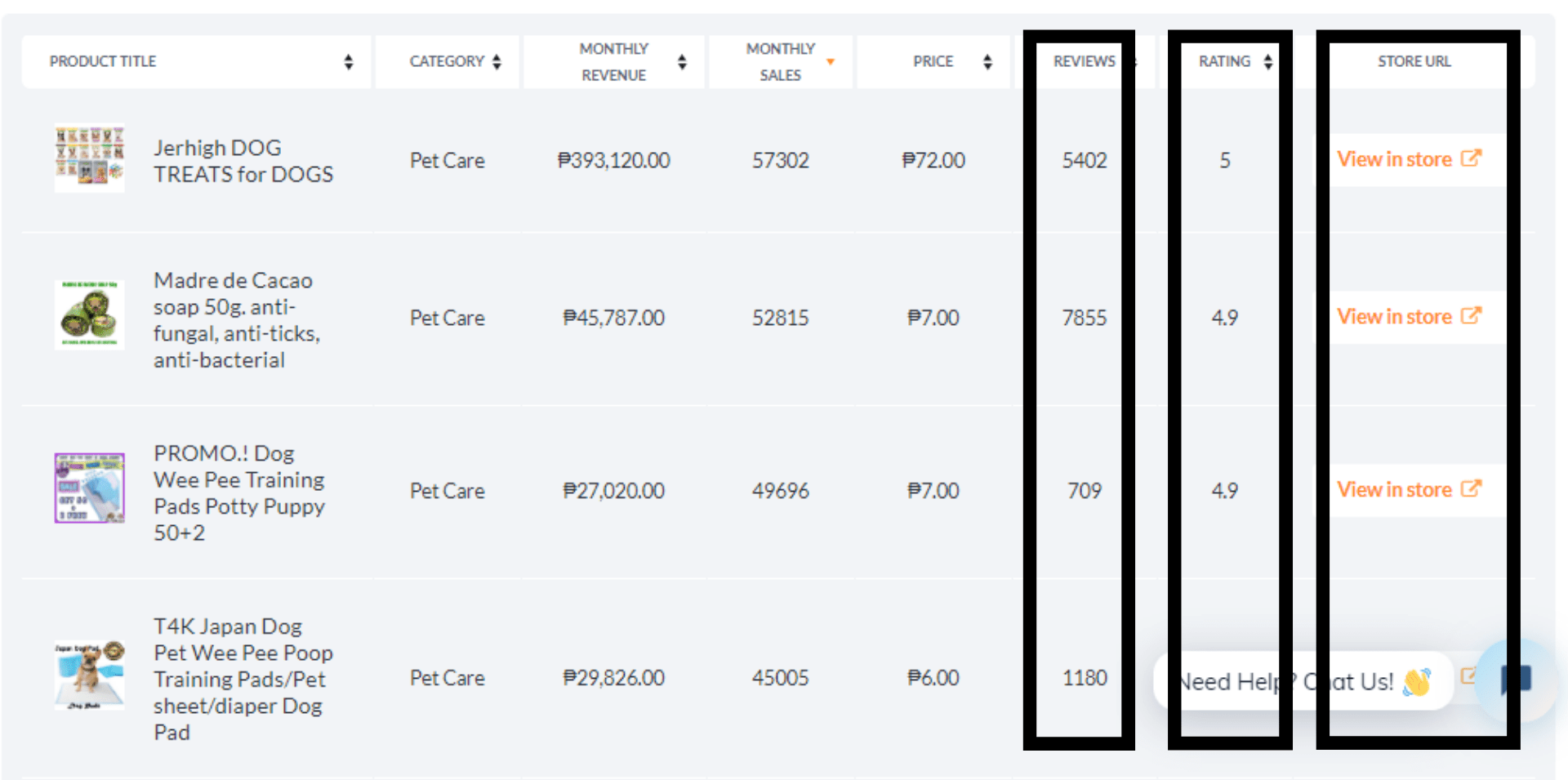
In the results, you will see that for each product, the number of reviews and the overall rating is available along with other information. This will let you determine which of these sellers who want to compete with in terms of pricing.
If you sell pet care products and you found two sellers selling similar items to yours, your competitor is the one with more reviews.
Note: If you are a Lazada seller, you have two options: you can avail the complete market research services of Split Dragon for a certain fee. The second option to search for your keywords and then identify competitors who dominate the market in terms of reviews.
Price change overtime. This means that you have to constantly monitor it because prices change over time. In other words, it is time-consuming.
To track the price of your competitors with little time consumed, you can use Split Dragon’s Competitor Products tracking feature.
In the Split Dragon Dashboard, click Competitor Intelligence, and then after that click Shopee Competitor Products/Lazada Competitor Products.
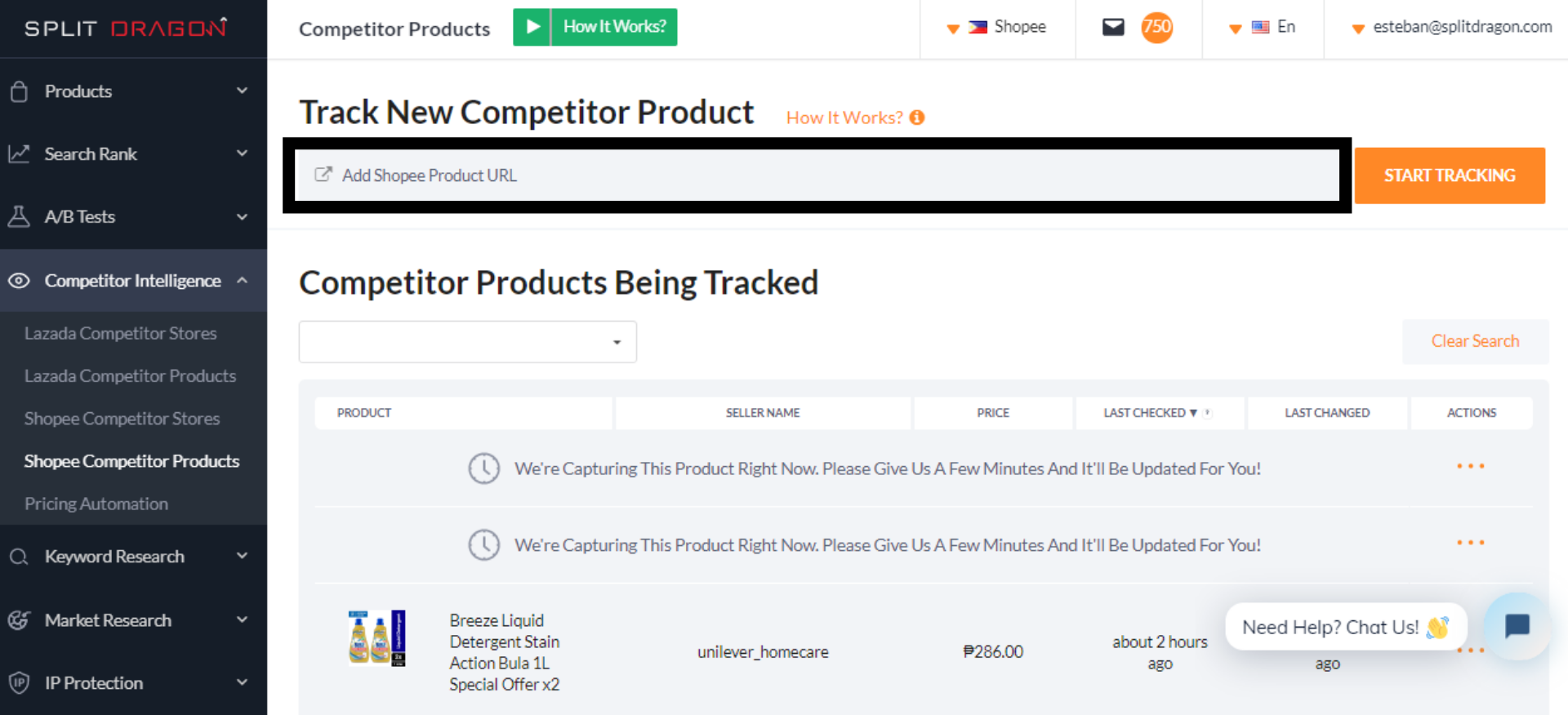
All you have to do is copy and paste the PDP link of your competitor and then click Start Tracking.
The tracking of your competitor’s pricing for that product will now be automated. You will receive a notification via email and the Split Dragon dashboard each time changes are made including the pricing.
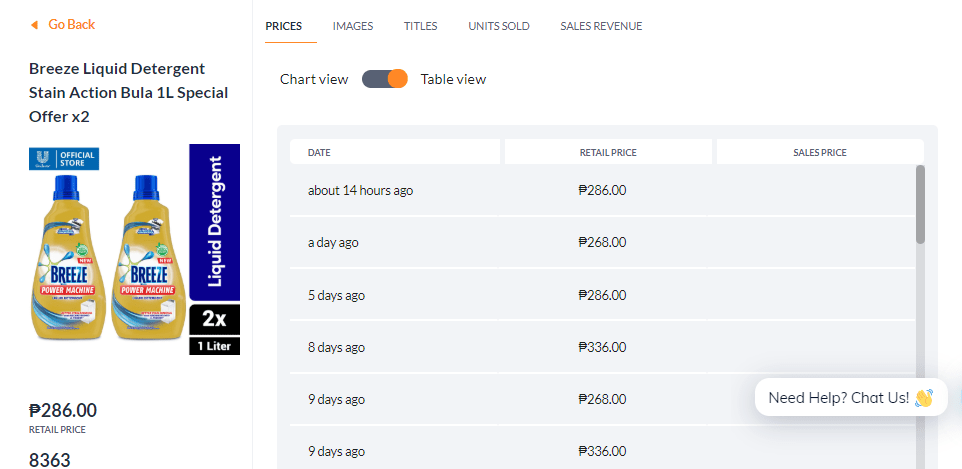
You will see the pricing history of your competitor.
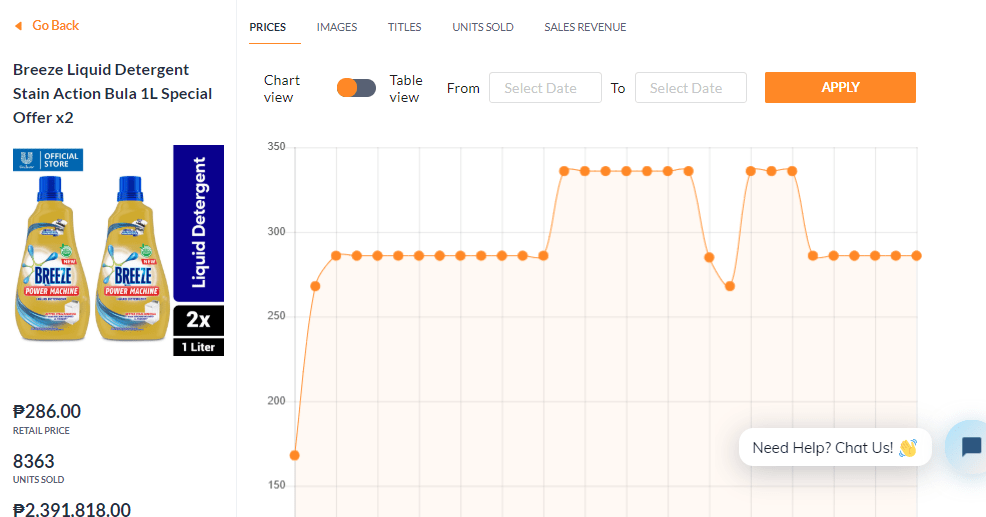
When you switch to chart view, you will also see the pricing trend over a time period.
What To Do After Getting Pricing Alerts From Your Competitors
- Match Competitor – For these competitors where you are trying to always stay matched to competitor pricing, you will reprice and match that competitor.
- Beat competitor by X% – For these competitors, you are always trying to beat the competitor pricing by a certain percentage. This is particularly valuable in product launch phases and when you are still focused on growing your sales revenue at a slight expense of profitability.
- No action – For these competitors, you will simply ignore their price changes as it isn’t deemed to be important for you to react sharply to their activities.
You can make a simple mapping of your competitors and their pricing strategy like in the below example. This will enable your team to react sharply and ensure that you are always competitive in category navigation and search results to get the most click-thrus and sales.
Another critical component of your pricing strategy should be setting minimum and maximum prices for each of your products. This will help ensure that you do not get caught up in reacting to price changes too much and damage your profitability beyond a set amount.
There is no clear-cut formula for your Lazada/Shopee pricing strategy. Always remember to react sharply to the major price triggers such as campaigns, product launches, and competitor price changes. But most importantly, you need to add AB testing to your seller arsenal. This will provide you with a data-driven view of the best price points for various products.





